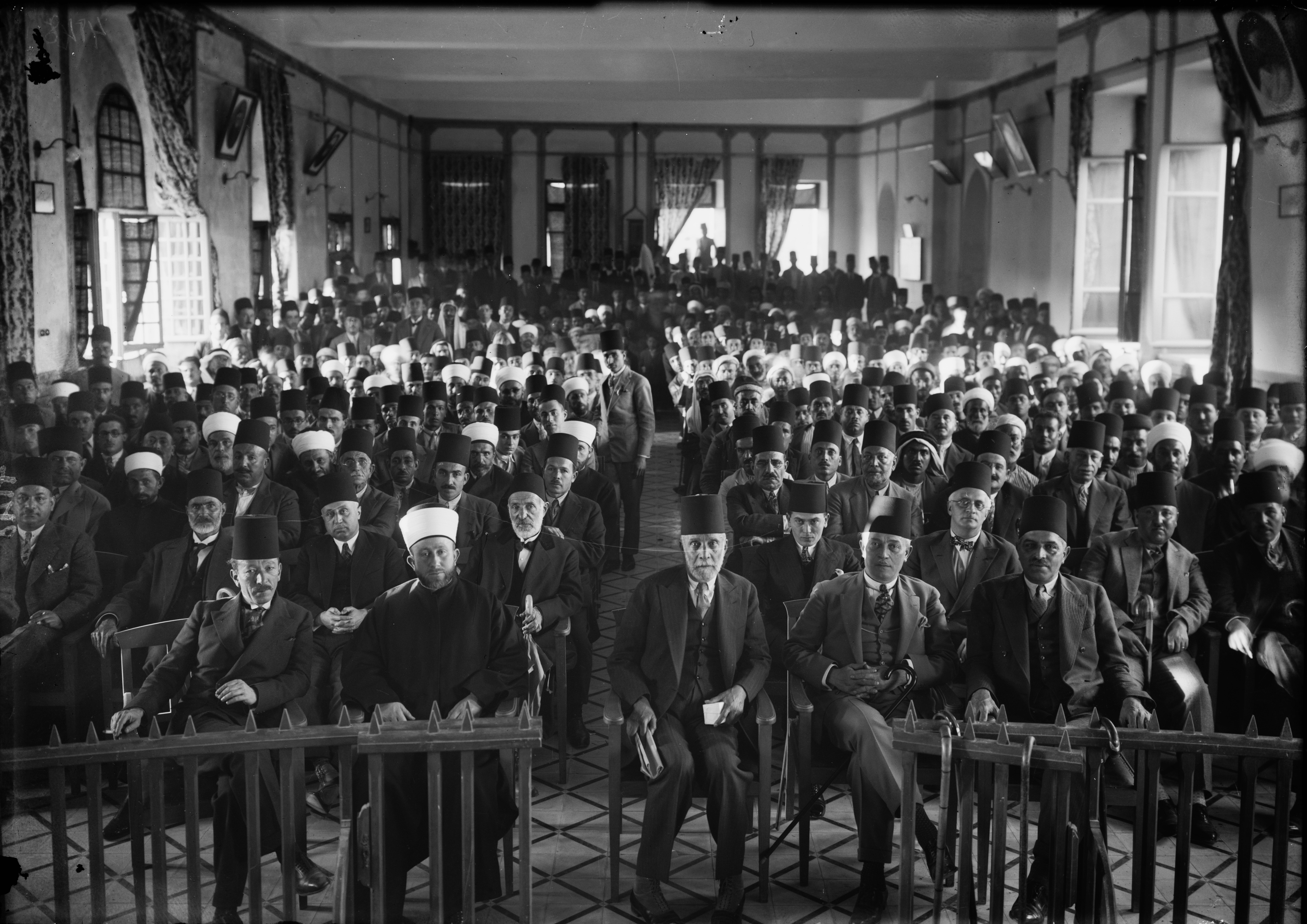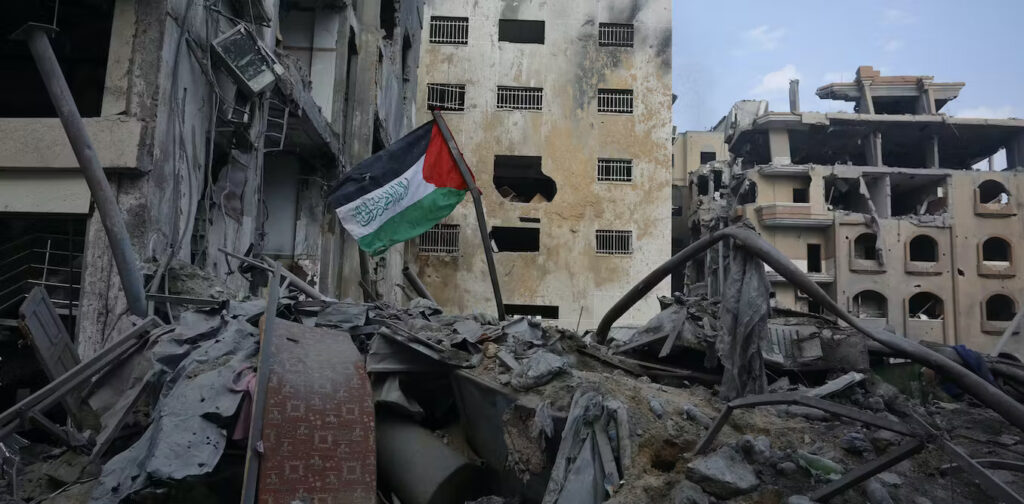History of the Gaza Strip
PALESTINE - ISRAEL, 16 Oct 2023
Maha Nassar | The Conversation - TRANSCEND Media Service
Why the History of the Densely Populated Enclave Is Key to Understanding the Current Conflict
12 Oct 2023 – The focus of the conflict in the Middle East has again returned to the Gaza Strip, with Israel’s defense minister ordering a “complete siege” of the Palestinian enclave.
Israel’s military operation, which involves extensive bombing of residences, follows a surprise attack on Oct. 7 by Hamas militants who infiltrated Israel from Gaza and killed more than 900 Israelis, which set off reprisal airstrikes by the Israel military and a mounting death toll among Gazans.
At least 16 humanitarian workers for UN agency, Red Cross dead in Gaza airstrikes
UNRWA workers, teachers, a gynecologist, engineer, counselor, support staffhttps://t.co/12bAGKZovv
— New York Daily News (@NYDailyNews) October 12, 2023
The order to cut off all food, electricity and water to Gaza will only worsen the plight of residents in what has been called the “world’s largest open-air prison.”
But how did Gaza become one of the most densely populated parts of the planet? And why is it the home to militant Palestinian action now? As a scholar of Palestinian history, I believe understanding the answers to those questions provides crucial historical context to the current violence.
A Brief History of Gaza
The Gaza Strip is a narrow piece of land on the southeastern shore of the Mediterranean Sea. Roughly twice the size of Washington, D.C., it is wedged between Israel to its north and east and Egypt to its south.
An ancient trade and sea port, Gaza has long been part of the geographic region known as Palestine. By the early 20th century, it was mainly inhabited by Muslim and Christian Arabs who lived under Ottoman rule. When Britain took control of Palestine following World War I, intellectuals in Gaza joined the emergent Palestinian national movement.

An Arab protest gathering against British policy in Palestine, 1929. (Wikimedia Commons)
During the 1948 war that established the state of Israel, the Israeli military bombed 29 villages in southern Palestine, leading tens of thousands of villagers to flee to the Gaza Strip, under the control of the Egyptian army that were deployed after Israel declared independence. Most of them and their descendants remain there today.
Following the 1967 Six-Day War between Israel and its Arab neighbors, the Gaza Strip came under Israeli military occupation. The occupation has resulted in “systematic human rights violations,” according to rights group Amnesty International, including forcing people off their land, destroying homes and crushing even nonviolent forms of political dissent.

An Israeli gunboat passes through the Straits of Tiran near Sharm El Sheikh, Egypt, during the Six Day War in 1967. (Israel Government, Wikimedia Commons, CC BY-SA 3.0)
Palestinians staged two major uprisings, in 1987-1991 and in 2000-2005, hoping to end the occupation and establish an independent Palestinian state.
Hamas, a Palestinian Islamist militant group centered in Gaza, was founded in 1988 to fight against the Israeli occupation. Hamas and other militant groups launched repeated attacks on Israeli targets in Gaza, leading to Israel’s unilateral withdrawal from Gaza in 2005.
In 2006, Palestinian legislative elections were held. Hamas beat its secular rival, Fatah, which had been widely accused of corruption. Elections haven’t been held in Gaza since 2006, but polling from March 2023 found that 45 percent of Gazans would back Hamas should there be a vote, ahead of Fatah at 32 percent.
After a brief conflict between Hamas and Fatah militants in May 2007, Hamas took complete control of the Gaza Strip. Since then, Gaza has been under the administrative control of Hamas, even though it is still considered to be under Israeli occupation by the United Nations, the U.S. State Department and other international bodies.
Who Are the Palestinians of Gaza?
The more than 2 million inhabitants of the Gaza Strip are part of the 14 million-strong global Palestinian community. About one third of Gaza’s inhabitants trace their family’s roots to land inside the Gaza Strip. The remaining two-thirds are refugees from the 1948 war and their descendants, many of whom hail from towns and villages surrounding Gaza.
The Palestinians of Gaza trend young: nearly half the population is under 18. The enclave is also very poor, with a poverty rate that stands at 53 percent.
Despite this grim economic picture, education levels are quite high. Over 95 percent of Gazan children ages 6-12 are in school. The majority of Palestinian students in Gaza graduate from high school, and 57 percent of students at the prestigious Islamic University of Gaza [which was hit by Israeli air strikes on Wednesday] are female.
But because of the circumstances of their surroundings, young Palestinians in Gaza find it difficult to live fulfilling lives. For graduates between the ages of 19 and 29, the unemployment rate stands at 70 percent. And a World Bank survey earlier this year found 71 percent of Gazans show signs of depression and high levels of PTSD.
There are several factors that contribute to these conditions. A major factor is the crippling, 16-year blockade that Israel and Egypt – with U.S. support – have imposed on Gaza.
Years of Blockade
Shortly after the 2006 elections, the Bush administration tried to force Hamas from power and bring in a rival leader from the Fatah party who was considered friendlier to Israel and the U.S. Hamas preempted the coup and took full control of Gaza in May 2007. In response, Israel and Egypt – with U.S. and European support – closed the border crossings into and out of the Gaza Strip and imposed a land, air and sea blockade.
The blockade, which is still in effect, limits the import of food, fuel and construction material; limits how far Gaza’s fishermen can go out to sea; bans almost all exports; and imposes strict limitations on the movement of people into and out of Gaza. In 2023, Israel has allowed only around 50,000 people a month to exit Gaza, according to U.N. figures.

Map by the U.N. Office for the Coordination of Humanitarian Affairs of the Gaza–Israel barrier in 2019. (Wikimedia Commons, Public domain)
The years of closure have devastated the lives of Palestinians in Gaza. Inhabitants there don’t have enough water for drinking and sanitation. They face electricity cuts that run 12-to-18 hours each day. Without adequate water and electricity, Gaza’s fragile health care system is “on the brink of collapse,” according to the medical rights group Medical Aid for Palestine.
These restrictions hit the young and the weak of Gaza particularly hard. Israel routinely denies sick patients the permits they need to receive medical care outside of Gaza. Bright students with scholarships to study abroad often find that they are unable to leave.
U.N. experts say this blockade is illegal under international law. They argue that the blockade amounts to a collective punishment of the Palestinians of Gaza, a violation of the Hague Convention and the Geneva Conventions that form the backbone of international law.
No End to the Suffering
Israel says that the blockade on Gaza is necessary to secure the safety of its population and will be lifted when Hamas renounces violence, recognizes Israel and abides by previous agreements.
But Hamas has consistently rejected this ultimatum. Instead, militant fighters stepped up the firing of homemade rockets and mortars into populated areas surrounding the Gaza Strip in 2008, seeking to pressure Israel to lift the blockade. They have sporadically attacked Israel in this way in the years since.
Israel has launched four major military assaults on Gaza — in 2008-09, 2012, 2014 and 2021 — in efforts to destroy Hamas’ military capabilities. Those wars killed 4,000 Palestinians, more than half of whom were civilians, along with 106 people in Israel.

A Palestinian man in the ruins of Al Jawhara Tower at the center of Gaza CIty after it was bombed the previous night, May 12, 2021. (M. Hajjar/NRC)
During that time, the U.N. estimates that there has been more than $5 billion worth of damage to Gaza’s homes, agriculture, industry, electricity and water infrastructure.
Each of those wars ended in a fragile cease-fire but no real resolution to the conflict. Israel seeks to deter Hamas from launching rockets. Hamas and other militant groups say that even when they have upheld previous cease-fires, Israel has continued to attack Palestinians and has refused to lift the blockade.
Hamas has offered a long-term truce in exchange for Israel ending the blockade on Gaza. Israel has refused to accept the offer, sticking to its position that Hamas must first end violence and recognize Israel.
In the months leading up to the latest escalation, conditions in Gaza have deteriorated even further. The International Monetary Fund reported in September that Gaza’s economic outlook “remains dire.” Conditions became more dire when Israel announced on Sept. 5 that it was halting all exports from a key Gaza border crossing.
Without an end in sight to the suffering caused by the blockade, it appears that Hamas has decided to upend the status quo in a surprise attack on Israelis, including civilians. Israel’s reprisal airstrikes and its imposition of a “complete siege” on the strip have heaped even further suffering on ordinary Gazans.
It is a tragic reminder that civilians bear the brunt of this conflict.
________________________________________________
 Maha Nassar is associate professor in the School of Middle Eastern and North African Studies, University of Arizona.
Maha Nassar is associate professor in the School of Middle Eastern and North African Studies, University of Arizona.
Go to Original – theconversation.com
Tags: Gaza, Hamas, Palestine, Palestine/Israel, Warfare
Join the BDS-BOYCOTT, DIVESTMENT, SANCTIONS campaign to protest the Israeli barbaric siege of Gaza, illegal occupation of the Palestine nation’s territory, the apartheid wall, its inhuman and degrading treatment of the Palestinian people, and the more than 7,000 Palestinian men, women, elderly and children arbitrarily locked up in Israeli prisons.
DON’T BUY PRODUCTS WHOSE BARCODE STARTS WITH 729, which indicates that it is produced in Israel. DO YOUR PART! MAKE A DIFFERENCE!
7 2 9: BOYCOTT FOR JUSTICE!
DISCLAIMER: The statements, views and opinions expressed in pieces republished here are solely those of the authors and do not necessarily represent those of TMS. In accordance with title 17 U.S.C. section 107, this material is distributed without profit to those who have expressed a prior interest in receiving the included information for research and educational purposes. TMS has no affiliation whatsoever with the originator of this article nor is TMS endorsed or sponsored by the originator. “GO TO ORIGINAL” links are provided as a convenience to our readers and allow for verification of authenticity. However, as originating pages are often updated by their originating host sites, the versions posted may not match the versions our readers view when clicking the “GO TO ORIGINAL” links. This site contains copyrighted material the use of which has not always been specifically authorized by the copyright owner. We are making such material available in our efforts to advance understanding of environmental, political, human rights, economic, democracy, scientific, and social justice issues, etc. We believe this constitutes a ‘fair use’ of any such copyrighted material as provided for in section 107 of the US Copyright Law. In accordance with Title 17 U.S.C. Section 107, the material on this site is distributed without profit to those who have expressed a prior interest in receiving the included information for research and educational purposes. For more information go to: http://www.law.cornell.edu/uscode/17/107.shtml. If you wish to use copyrighted material from this site for purposes of your own that go beyond ‘fair use’, you must obtain permission from the copyright owner.
Read more
Click here to go to the current weekly digest or pick another article:
PALESTINE - ISRAEL:
